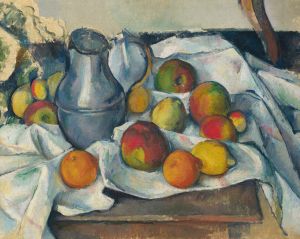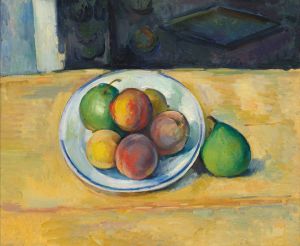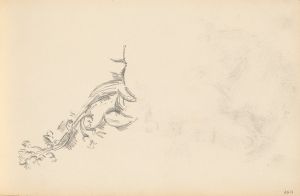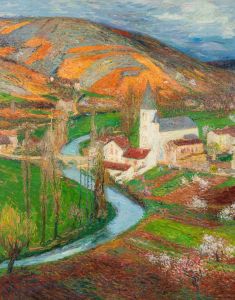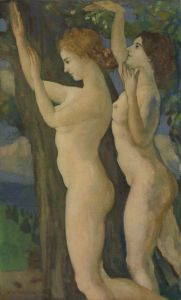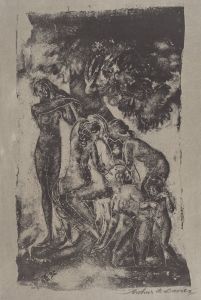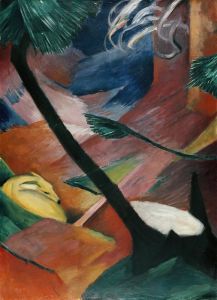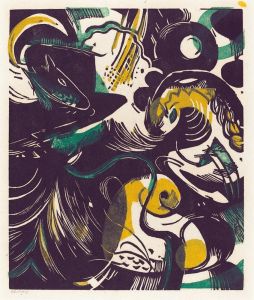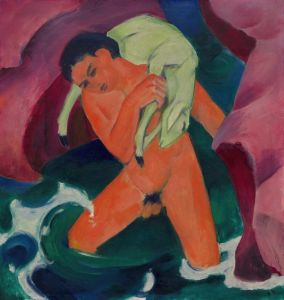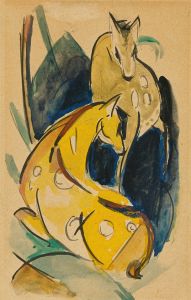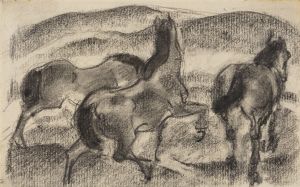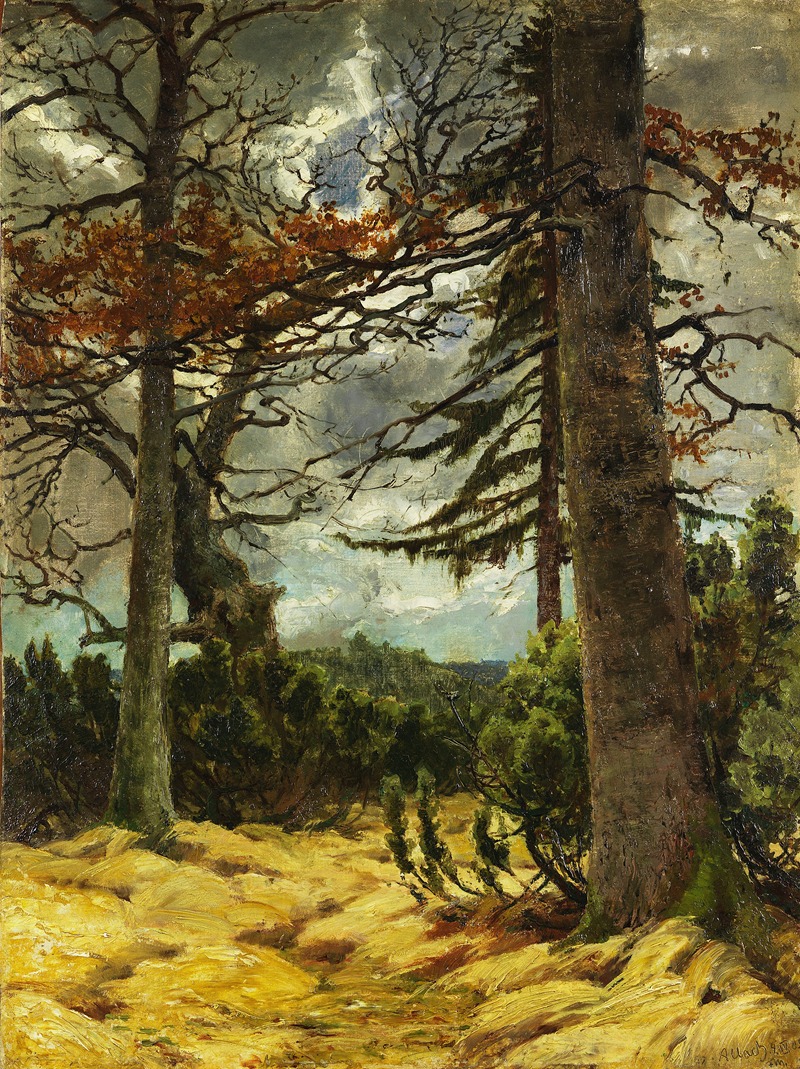
Eichenstämme im Vorfrühling
A hand-painted replica of Franz Marc’s masterpiece Eichenstämme im Vorfrühling, meticulously crafted by professional artists to capture the true essence of the original. Each piece is created with museum-quality canvas and rare mineral pigments, carefully painted by experienced artists with delicate brushstrokes and rich, layered colors to perfectly recreate the texture of the original artwork. Unlike machine-printed reproductions, this hand-painted version brings the painting to life, infused with the artist’s emotions and skill in every stroke. Whether for personal collection or home decoration, it instantly elevates the artistic atmosphere of any space.
Franz Marc was a prominent German painter and a key figure in the German Expressionist movement. He was a founding member of Der Blaue Reiter (The Blue Rider), a group of artists who sought to express spiritual truths through their art. Marc is best known for his vivid use of color and his depictions of animals, which he believed to be more pure and beautiful than humans. His work often reflects a deep connection with nature and a desire to convey the spiritual harmony he perceived in the natural world.
"Eichenstämme im Vorfrühling" (Oak Trunks in Early Spring) is one of Marc's lesser-known works, yet it embodies many of the themes and stylistic elements that characterize his oeuvre. Painted in 1909, this piece captures the essence of early spring through its depiction of oak trees. The painting reflects Marc's fascination with nature and his innovative approach to color and form.
In "Eichenstämme im Vorfrühling," Marc employs a vibrant palette, using bold and contrasting colors to convey the vitality and renewal associated with spring. The oak trunks are depicted with dynamic brushstrokes, emphasizing their strength and resilience. Marc's use of color is not merely representational but also symbolic, as he often associated specific colors with particular emotions or spiritual states. The interplay of colors in this painting suggests a sense of awakening and transformation, themes that are central to the concept of spring.
Marc's approach to composition in this work is also noteworthy. He often used simplified forms and abstracted shapes to convey the essence of his subjects. In "Eichenstämme im Vorfrühling," the trees are rendered with a certain degree of abstraction, focusing on their structural qualities rather than detailed realism. This abstraction allows viewers to engage with the painting on a more emotional and spiritual level, aligning with Marc's belief in the expressive power of art.
The painting reflects Marc's broader artistic philosophy, which was influenced by a variety of sources, including the works of Vincent van Gogh, Paul Gauguin, and the Fauves. Marc was also deeply inspired by the writings of philosophers and mystics, which informed his understanding of the spiritual dimensions of art. His work often seeks to transcend the material world, aiming to reveal the underlying spiritual reality he believed existed in nature.
"Eichenstämme im Vorfrühling" is a testament to Marc's innovative spirit and his commitment to exploring new artistic frontiers. While it may not be as widely recognized as some of his other works, it offers valuable insight into his artistic process and his enduring fascination with the natural world. The painting stands as a reminder of Marc's unique ability to capture the beauty and mystery of nature through his distinctive use of color and form.
Franz Marc's life and career were tragically cut short by his death in World War I in 1916. However, his contributions to the world of art continue to be celebrated, and his works remain influential to this day. "Eichenstämme im Vorfrühling," like many of his paintings, invites viewers to contemplate the deeper connections between humanity and nature, encouraging a sense of wonder and reverence for the world around us.





